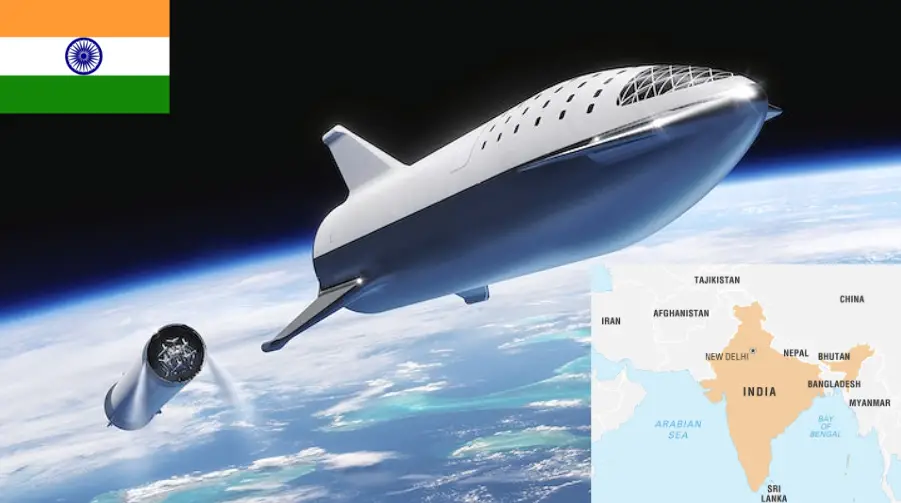Today, we will discuss an unsung participant in the space race: the Indian Space Research Organization. India is one of the few independent nations or entities to have developed and flown a series of orbital rockets. During the late 1990s and early 2000s, India was the go-to provider of inexpensive satellite launches. India has even reached the moon and Mars with their spacecraft. Things haven’t always gone according to plan with India’s outer space ambitions, with their most recent SSLV rocket test failure being the latest in a series of misses, but overall, India has made a significant contribution to human spaceflight, one that I bet most people are either fully or partially unaware of. In fact, the Indian Space Research Organization dates back to 1969. It was formed a month after Neil Armstrong’s first moonwalk.
The Indians were inspired by the achievements they witnessed, but they were also very practical. India did not enter the space race with the intention of winning, but they understood the importance of maintaining a presence in outer space alongside the global superpowers of the United States, Russia, and China. This was the Aryabada, a research satellite named for a 5th century Indian mathematician and astronomer. Since India had not yet developed its own space rocket, the satellite rode on a Soviet launch vehicle. Unfortunately, the satellite was not particularly successful; after only five days, all signal was lost from the spacecraft. A depiction of the satellite appeared on the two rupee bill of India for decades, as well as on a Soviet Union postage stamp in 1984. In 1979, India completed development of their first rocket and began attempting to launch their own satellites using the SLV, or satellite launch vehicle. It was a modest rocket, measuring just one meter in diameter and 22 meters in height, and its four stages used solid propellant rocket engines to lift a maximum of 40 kilograms into low earth orbit.
They were the sixth nation to successfully launch a vehicle into Earth’s orbit. This increased the launch capacity to just under four metric tons for low earth orbit and just under two tons for polar orbit. This rocket became an international standard for providing the cheapest access to outer space and went on to complete 53 launches in the late 1990s and early 2000s. India has never wavered from their belief in efficient and cost-effective space flight. The cost to launch one kilogram of weight into space on the PSLV was approximately $8,500, while the cost to fly one kilogram on the space shuttle was approximately $18,000. With their reusable Falcon 9 booster, SpaceX would eventually dominate the low-cost orbital launch market, lowering the cost per kilogram of an orbital launch to just $2,600. When the moon impact probe landed near the south pole, near the Shackleton crater, India became the fourth space agency to reach the moon’s surface. During its time on the moon, the moon impact probe discovered water molecules for the first time in the lunar regolith. The Indian Space Research Organization made another historic achievement with the Mangalayan Mars Orbiter Mission, launched on a PSLV-XLV rocket. The Martian was published the following year.
From there, India upgraded their launch vehicle to the GSLV with geostationary orbit capability. This replaced the six solid rocket side boosters with four liquid-fueled hypergolic boosters. The new third stage for the GSLV marked India’s first hydrogen-powered rocket engine. This was upgraded again to the GSLV mark iii, which went back to solid-fueled side boosters with the enormous SS 200 strap-ons that permit an in-orbit re-entry. The mission was launched on a GSV Mark iii rocket in July 2019 and arrived in orbit around the moon one month later. The Vikram lander was deployed according to plan, and everything seemed to be going well until about halfway to the surface, when something went horribly wrong with the vehicle and it appeared to flip upside down at one point, with the thruster driving it towards the moon’s surface instead of slowing it down. Vikraman impacted the moon at a speed of India’s latest rocket development is the SSLV, or small satellite launch vehicle, which is a modern take on the same mission as the old pslv The cheap and efficient service to low earth orbit satellites has gotten a lot smaller over the last couple of decades, so the need for a higher capacity rocket has fallen off accordingly The SSLV is designed for a maximum of 500 kilograms into low earth orbit This is where smaller rocket startups like Firefly and Rocket Lab have a competitive advantage.
The first three burns of the four-stage rocket were successful; only the final module experienced a software error and failed to fire its thrusters for more than three minutes. 1 of a second in a 20-second burn that should have lasted 20 seconds India has very ambitious space flight plans for the future, including a second shot at the moon, a human space flight, and an interplanetary journey to Venus. The Chandrayaan-3 mission is scheduled to launch in 2023 and is essentially a second attempt at what the Chandrayaan-2 mission was supposed to accomplish with a lander and rover on the lunar surface. The Chandrayaan-3 mission will be followed in 2024 by India’s first human spaceflight mission, named Gaganyan. This was aspirationally supposed to happen in 2020, but there have been delays, and the Indian space agency has decided to slow down
![]()
